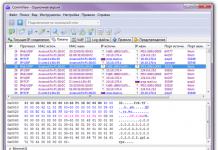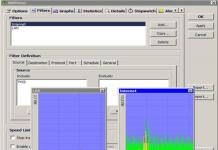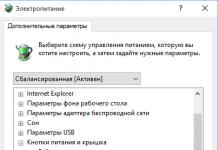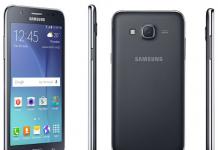- Class: tablet
- Case materials: plastic and metal
- Operating system: Google Android 6.0 + EMUI 4.1
- Processor: 8 cores, Huawei HiSilicon Kirin 950
- RAM: 3/4 GB
- Storage memory: 32/64 GB
- Interfaces: Wi-Fi (b/g/n/ac), Bluetooth 4.1, 3.5 mm headset jack, microUSB
- Screen: capacitive, IPS-LCD 8.4" with a resolution of 2560x1600 pixels
- Camera: 8 MP / 8 MP
- Additionally: 3G/4G (CAT 4), microSD, accelerometer, light sensor, GPS/GLONASS
- Battery: non-removable, lithium polymer (Li-Pol) with a capacity of 5100 mAh
- Dimensions: 215.5 x 124.2 x 7.3 (mm)
- Weight: 310 grams
Contents of delivery
- Tablet
- Headphones AKG H300
- USB cable
- Network adapter


Introduction
Not long ago we already got acquainted with the Huawei tablet – MediaPad M3. The test was so detailed that in this case it is worth making some adjustments and including experience of use. Let me remind you that the key features of this device are a thin body of 7.3 mm, low weight - 310 grams, a metal body, high screen resolution and productive hardware. In addition, the M3 has a music processor and an amplifier to drive two stereo speakers.
The premium version of the device arrived for review. It differs from the regular version not only in its maximum parameters (4/64 GB), but also in the inclusion of AKG H300 headphones. “Ears” are created specifically for Huawei. Also included in the kit you will find a 2 A network adapter (fast charging is not supported), a SIM extractor, a USB cable and “waste paper” in the form of various instructions.
Unfortunately, at the moment there is no information about the price and release date. I assume the end of October, the cost is around 30,000 - 35,000 rubles.
Design, dimensions, control elements
The device has a rectangular shape, slightly sloping corners, the back panel smoothly transitions to the sides. In general, the M3 resembles the company's smartphones. The frame of the device is made of metal and processed on a special five-axis machine (5-axis CNC Machine) with program control, the chamfers are ground. On the reverse side there is a plastic strip for antennas and a plastic insert on top for signal transmission. Dimensions – 215.5 x 124.2 x 7.3 mm, the tablet weighs only 310 grams. The total thickness of the gadget is 7.3 mm, and the minimum narrowing is about 5 mm. That is, in the hand it feels very thin.


The case is quite dirty, fingerprints remain, but the prints are erased quickly. The glass is slightly curved and creates a 2.5D effect. The oleophobic coating is of high quality, the finger glides easily. The tablet will be available in two colors: gold and silver. Both colors look good. Most of the front panel (about 82%) is occupied by the screen.


There is a fingerprint scanner on the front panel. It is also a touch button “Back” / “Home” (long hold). At the top is the camera, next to it is an indicator of missed events.


At the bottom end there are: a speaker, micro-USB (strange that it is not Type-C, since all top Huawei models have this connector), a microphone and metal slides for installing two nano-SIM or nano-SIM+microSD. On the top there is 3.5 mm and another speaker.





On the right is the power button and volume rocker key.
On the back surface there is a camera lens peephole, the Huawei and Harman/Kardon inscription.



Display
This tablet uses a screen with a diagonal of 8.4 inches. The frames on top are 16 mm, on the bottom – 18 mm, on the right and left – 6 mm each. IPS matrix without an air gap, capacitive sensor supports up to 10 simultaneous touches. High resolution - 2560x1600 pixels, density - 359 PPI.
White brightness is 335 cd/m2, maximum black brightness is 0.36 cd/m2. Contrast – 930:1 (not 1500:1, as the manufacturer claims).





The screen is bright, colorful, somewhat reminiscent of AMOLED matrices. Viewing angles are maximum without purple and yellow tints.
The tablet has a ClariVu chip, which is responsible for image transmission. There is also “Eye care mode” technology, when the screen turns into warm colors to reduce eye strain.










Viewing Angles

Light exposure

Battery
The MediaPad M3 has a non-removable battery with a capacity of 5100 mAh. It seems to me that for an 8-inch diagonal the battery should be at least 7000 mAh. After all, the M3 has LTE, calls and SMS functions, so the gadget can be used as a large smartphone. And for such purposes a larger battery is needed.
In my mode, the tablet worked for 9 – 12 hours. With a more intense load - about 7 hours, in tablet mode (networking via Wi-Fi, no conversations, practically no LTE) - 27 hours. Watching movies - up to 9 hours at medium brightness, toys - up to 5 hours.


The manufacturer promises the device will work for up to two days. And if you turn on “Smart Power Save”, then plus another 30% energy savings.
Communication capabilities
The device works in 2G/3G networks, as well as LTE. You can make calls using your tablet. To do this, there is the “Phone” application with the usual dialing.
- GSM: 850/900/1800/1900 MHz
- UMTS: Band1/2/5/6/8/19
- TD-SCDMA: Band 34/39
- LTE-TDD: Band 38/39/40/41(100 MHz)
- LTE-FDD: Band 1/3/5/7/8/19/20/28
- LTE FDD frequencies: Band 1, 3, 7, 8, 20, 26, 28; TDD: Band 38, 40, 41


There is Wi-Fi b/g/n/ac (2.4 GHz and 5 GHz), Bluetooth version 4.1 with BLE, GPS (AGPS, GLONASS, BDS). The sensitivity is excellent, the speed of satellite detection even with a cold start is about 10-20 seconds.
Memory and memory card
This model has 4 GB of RAM. The internal memory is 64 GB (there is a 32 GB version), and about 54 GB is available. There is a slot for installing a microSD memory card, the maximum capacity is 128 GB.

Cameras
The main module is 8 MP with autofocus (aperture f=2.0), additional for selfies – 8 MP without autofocus (aperture f=2.0), no flash, one microphone.
The camera quality is slightly worse than the camera quality of the more affordable MediaPad T2 7 Pro tablet. Mainly complaints about detail. There’s nothing special to comment on – he usually shoots. Although it’s strange, because the device is not cheap.
The video is mediocre (the front camera only writes HD). Huawei generally has problems with video, even on flagship devices like P9 or P9 Plus.





Sample photos
Performance
The Huawei MediaPad M3 tablet is equipped with a time-tested chipset of its own production – HiSilicon Kirin 950 (8 cores). It was introduced exactly a year ago. Not top-end performance, but the speed is enough for such a device. The Mali-T880 MP4 is responsible for the graphics.
In Antutu, the tablet scores almost 90,000 points. It is necessary to take into account that the screen resolution is 2560x1600 pixels; if it were FullHD, the device would score more than 120k. In any case, this result is enough for everything: working with applications, toys and video editing.





Screenshots from the game Implosion



The device runs Google Android OS version 6.0. Shell – EMUI 4.1.



Multimedia
When it comes to sound, the M3 uses two stereo speakers. Specialists from Harman/Kardon worked on the sound. In addition, there is an audio processor (manufactured by Asahi Kasei Microdevises, AK4396 chip): the dynamic range is 125 dB, distortion is 106 dB.

There is a Smart Power Amplifier and SWS 2.0 surround sound function (best used without a headset).

In portrait orientation of the device, the bottom speaker acts as a subwoofer, and the top one serves to reproduce high frequencies. In landscape orientation, both speakers sound the same, but the stereo is more expanded.
The speakers in the M3 are really cool: at a distance of a meter from the tablet, you can clearly hear which side the sound is coming from. Great effect.



The AKG H300 headphones didn't make much of an impression, but they sound very good.
Conclusion
The Huawei MediaPad M3 tablet turned out to be interesting from all points of view. As they say, they pleased everyone: there is an excellent build, premium body materials, high screen resolution, a fingerprint scanner, high speed, a lot of memory, the coolest sound through the speakers, and so on. The cameras let us down a bit; they could have been of better quality.
There are practically no competitors with four gigabytes of RAM; I found only ASUS ZenPad 8.0 Z581KL, which, by the way, is also not on sale yet. With three “gigs” – Samsung and Sony. For example:
- Samsung Galaxy Tab S2
- Sony X/peria Z4
As a telecommunications giant and the world's third largest smartphone seller, Huawei continues its expansion into various sectors of the mobile technology market, including tablets. The company does not pay attention to the dark times for this niche and has once again updated the MediaPad M line - mini-tablets with 7-8” and smartphone functions.
Equipment
The device begins to surprise from the very beginning. Firstly, we are greeted by a stylish box completely white, the inscription and company logo shimmer in gold in the light. The situation repeats itself: the average buyer has long heard of these Chinese giants, which means it’s enough to stick on a company logo, and everyone will immediately know whose product it is. Secondly, as soon as you start looking at the official package, you feel a state of shock from the fact that the box is packed to capacity.  Contents of delivery:
Contents of delivery:
- charger (5V/2A)
- Micro USB cable
- documentation
- clip
- screen protective film
- cleaning cloth
- AKG H30 headphones
- ear tips of different sizes
 Impressive set, isn't it? I believe that one of the qualities that brings a manufacturing company into the “league of the best” is the most complete set, and not a gradual reduction in price and savings on everything except the device itself. Huawei has done everything to make us, ordinary users, fall in love with their tablet even before we turn it on.
Impressive set, isn't it? I believe that one of the qualities that brings a manufacturing company into the “league of the best” is the most complete set, and not a gradual reduction in price and savings on everything except the device itself. Huawei has done everything to make us, ordinary users, fall in love with their tablet even before we turn it on.
Design
For some reason, the appearance of the Huawei MediaPad M3 reminded me of just the larger version. Still, the giant has long formed its own principles and aspects of design, which evolve every year. The body of the device is made entirely of aluminum, and the only plastic insert for the antenna output is located on the top rear side, in the same place as the camera eye. By the way, with a very pleasant texture of thin stripes running in a row that are barely noticeable to the eye.  From the photographs you might get the impression that we are reviewing a silver version of the tablet, but this is not the case. In fact, in the review the device is golden in color, but it only looks like that when you look at the back side in low light. In bright light, the back side has a delicate iridescent color between soft gray and soft gold. The so-called “champagne” color, which has become popular in recent years. Also located on the back are the logos of Huawei and Harman/Kardon, with whose help the tablet’s sound capabilities were created.
From the photographs you might get the impression that we are reviewing a silver version of the tablet, but this is not the case. In fact, in the review the device is golden in color, but it only looks like that when you look at the back side in low light. In bright light, the back side has a delicate iridescent color between soft gray and soft gold. The so-called “champagne” color, which has become popular in recent years. Also located on the back are the logos of Huawei and Harman/Kardon, with whose help the tablet’s sound capabilities were created.  On the front side there is only a front camera and the company name located on the side. And it’s not at all ugly, like printing an inscription in the center or even below the screen. By the way, the device has very narrow frames, amounting to only 0.5 mm. This is really cool, because, personally, I can safely use the tablet with one hand, without making phantom clicks. Unfortunately, regardless of the color chosen, the front side will remain white. I would prefer the black version on both sides.
On the front side there is only a front camera and the company name located on the side. And it’s not at all ugly, like printing an inscription in the center or even below the screen. By the way, the device has very narrow frames, amounting to only 0.5 mm. This is really cool, because, personally, I can safely use the tablet with one hand, without making phantom clicks. Unfortunately, regardless of the color chosen, the front side will remain white. I would prefer the black version on both sides.
The tablet has two speakers: one located on top, the other on the bottom. However, when I held the device horizontally in both hands, my fingers never overlapped them. This suggests that the manufacturer was very careful when choosing a location for the speakers. There is also a 3.5mm audio port on the top. At the bottom there is a microphone, an input for Micro USB and a combined tray for Nano SIM and memory card. Working with two SIM cards is impossible.
The arrangement of the buttons on the sides is very similar to the “smartphone” version. On the right there is a volume rocker and a power button, on the left there is nothing. For a tablet, a similar arrangement of keys is an excellent solution in terms of ergonomics and ease of use.
Fingerprint's scanner
Why didn’t I say anything about the smart button located under the screen in the last section? Yes, for one simple reason: she is so smart that she deserves a separate section. You should initially clarify that the button is touch-sensitive only. I could not get used to this decision for quite a long time due to the fact that I had not encountered this before.  The most interesting thing is that you don’t have to use on-screen buttons, because the physical key supports gestures that replace absolutely everything. For example, a quick press is to go back to an action, and a hold returns you to the main menu. There is also a swipe left or right. And all this is customizable for individual use!
The most interesting thing is that you don’t have to use on-screen buttons, because the physical key supports gestures that replace absolutely everything. For example, a quick press is to go back to an action, and a hold returns you to the main menu. There is also a swipe left or right. And all this is customizable for individual use!
The fingerprint scanner works extremely quickly and never makes mistakes. The finger is always recognized regardless of which side you apply it to. It’s hard to say about the unlocking time, because the tablet comes out of sleep literally the same second when your finger is on the button. It is immediately noticeable that the technology and software have been brought to mind.

With the advent of new verification and protection technologies, Huawei began to pay great attention to protecting the personal data of its customers. You can make absolutely any information available only to a specific fingerprint. This function can be found in all devices of this brand released over the last year and a half.
Display
The screen of the Huawei MediaPad M3 is worthy of praise, because this is a real flagship display, which is equipped with an ideal resolution, contrast, color depth, color reproduction and customization for such a diagonal. The screen is created using IPS technology without an air gap, and there is also no 2.5D glass effect. The front side is completely flat. Multitouch shows support for up to 10 touches, which means the screen sensitivity is at a high level.

- 8.4 inches
- resolution 2560 x 1600 pixels
- dot density 359 ppi
It is impossible to see individual pixels on the display. In the notification and settings curtain there is a vision protection function, which includes a predominance of yellow shades. But in reality, you can choose any color from the palette.


I compared the screen of the Huawei MediaPad M3 (in the photos on the left or below) with the screen of a tablet, which is 6 times cheaper than the main character of this review, namely with the device. The difference is visible to the naked eye and very noticeable to the eye. 
 What immediately catches your eye? Depth of black color, excellent display clarity, absence of toxic shades that fade into green, large reserve of brightness. In general, the eyes get a real pleasure when they look at the Huawei MediaPad M3. There is also such an interesting “trick” that every time the lock screen wallpaper changes to a new one - the carousel effect. I noticed that almost every time I unlocked, I looked for a few seconds at the display and at the automatically selected photo from the Internet.
What immediately catches your eye? Depth of black color, excellent display clarity, absence of toxic shades that fade into green, large reserve of brightness. In general, the eyes get a real pleasure when they look at the Huawei MediaPad M3. There is also such an interesting “trick” that every time the lock screen wallpaper changes to a new one - the carousel effect. I noticed that almost every time I unlocked, I looked for a few seconds at the display and at the automatically selected photo from the Internet.
Specifications
- HiSilicon Kirin 950 processor (8 cores, with 4 Cortex-A53 cores, up to 1.8 GHz and 4 Cortex-A72 cores, up to 2.3 GHz, 16 nm, 64-bit)
- graphics Mali-T880 MP4 900 MHz
- RAM 4 GB LPDD4 (after reboot exactly 2 GB free)
- 64 GB data storage (54 GB available out of the box)
- Supports Micro SD memory cards up to 128 GB
- 8.4" IPS display with 2560 x 1600 resolution, no air gap
- 8 MP front camera (f/2.2 aperture, 1080p/30 frame video recording, no flash)
- main camera 8 MP (aperture f/2.2, video recording at 1080p/30 frames)
- 5100 mAh battery (no fast charging, 5V/2A)
- dedicated audio chip AK4376
- OS Android 6.0
- own shell EMUI 4.1 (beta version of the firmware for six months)
- sensors: accelerometer, light and distance sensor, gyroscope, electronic compass, fingerprint scanner
- Micro USB connectors (OTG supported), 3.5 mm audio output
- Dimensions: 215.5 x 124.2 x 7.3
- weight 310 grams
Wireless capabilities:
- 2G, 3G, 4G LTE-TDD: 38/39/40/41, LTE-FDD: 1/3/5/7/8/19/20/28
- no support for dual SIM cards (only one SIM card and memory card)
- Wi-Fi (802.11 a/b/g/n, 2.4 GHz/5 GHz), Bluetooth 4.1
- Navigation: GPS, A-GPS, Glonass



If you are going to purchase a tablet, then you can be calm about the operation of 4G communications in Russian networks or in the networks of CIS countries, because most of the available bands that currently exist are supported.
At first glance, it may seem that we are looking at an extremely powerful gaming device, but this is absolutely not the case. First, the results of synthetic tests:






Performance
Undoubtedly, you can perform daily tasks without any problems, open several applications and not be afraid that they will be unloaded from the system after a while. But a couple of times I encountered the fact that the tablet began to slow down very seriously and the reasons for this behavior are still unclear. Only rebooting the device helped. You can work in the browser with at least ten open tabs simultaneously with heavy pages; you will not find any lags or freezes.


In the game World of Tanks Blitz, the number of frames per second on medium and high settings is almost the same and the speed is approximately at the same level. On average, the MediaPad M3 produces 20-25 FPS, which is not suitable for comfortable gaming. And this is in a device for 30 thousand rubles! Yes, I understand perfectly well that the resolution of the display is 2K, and not the usual Full HD, however, the creators should work on optimizing 3D graphics.


There are also drops of up to 5-6 FPS in battles or on maps with a lot of vegetation. You can immediately understand that it is impossible to play. I think that installing a newer HiSilicon Kirin 960 processor could solve the problem of poor performance of the device in games with 3D graphics.
Photo and video
What are cameras on a tablet for? That's right, mainly for video communication. Huawei has foreseen this and made it possible to record video from the rear and front cameras in 1080p / 30 frames. But the company went further, because you can squeeze out quite beautiful and artistic photos from the main sensor. Surprisingly, there is a professional mode where you can adjust a large number of parameters yourself, including ISO.



Main camera
- resolution 8 MP
- aperture f/2.2









I can say for sure that the tablet takes photographs much better than Chinese smartphones in the mid-price category. Of course, the most disappointing thing is the lack of flash. I don’t think it was that hard to add it, most likely they just saved money. In general, the camera is 100% suitable for photos on Instagram or other social networks, and in PRO mode you can even feel like a real photographer. The original photo can be viewed.
Front-camera
The thought comes to mind that both cameras have the same sensor. This is evidenced not only by technical data, but also by the shooting results. True, the software capabilities are very limited. For example, there is no autofocus and professional mode.
- resolution 8 MP
- aperture f/2.2



Video shooting
The quality of the video leaves a very strange impression. Firstly, autofocus is only available when you tap on the device screen. Secondly, as you can see in the video, this autofocus works terribly, as well as capturing light in the frame. The sensor cannot decide what to do, which is why it begins to become very dull. Perhaps the beta version of the firmware is having an effect, where the software has not been brought to an ideal state.
Shell
The proprietary EMUI shell is perhaps one of the most beautiful and sophisticated Android-based systems currently available on the market. And it is very reminiscent of iOS. This solution is most suitable for people who don’t want to fool themselves with firmware, but just buy and enjoy it from the very beginning, without fear of any shortcomings or glitches. Unfortunately, updates are not released as often as we would like, and it is generally unknown whether there will be an upgrade to the new version - Android 7.0.



The top curtain is divided into two parts: notifications and icons. I think this is a pretty interesting solution. At least it looks fresher than with a standard swipe down, when notifications are called up first, and with another swipe the settings themselves are called up.


There is a nice bonus in the form of pre-installed software from Microsoft. The form factor and display quality are ideal for such office applications.
Another very cool feature of the proprietary shell is splitting the screen for two applications. Using the blue stripe, you can adjust the amount of space that is allocated for each running program. When this function is running, everything works very quickly.
Sound quality
We have gradually come to the strongest side of the tablet - the sound. In no other mobile device or tablet have I heard such high-quality sound with high and low frequencies from external stereo speakers, which, by the way, were produced in collaboration with Harman/Kardon and are located on the short sides of the case. Thanks to this solution, the maximum volume reserve is very high, you can safely forget about your portable speaker, because the sound does not produce any hoarseness and is crystal clear.  The gadget contains proprietary SWS 3.0 (Super Wide Sound) technology, which allows you to expand the frequency range and gives even greater sound depth to any tracks. Naturally, this is only software processing, which means that the result is not always ideal. Only suitable for certain genres of music.
The gadget contains proprietary SWS 3.0 (Super Wide Sound) technology, which allows you to expand the frequency range and gives even greater sound depth to any tracks. Naturally, this is only software processing, which means that the result is not always ideal. Only suitable for certain genres of music.  Frankly, I don't understand why most people admire the AKG H300 headphones that come in the box. Firstly, they are extremely inconvenient, even taking into account the fact that the kit comes with several attachments of different sizes. Secondly, the sound, even with proprietary technology enabled, leaves much to be desired. There is a complete lack of bass; the headphones do not sound at all at the level they claim. After all, these headphones come only in the most expensive configuration. But with full-size Xiaomi Mi Headphones Comfort it’s a completely different matter! The sound changes for the better. I sat listening to music from the tablet for several hours and I really didn’t want to interrupt this pleasant pastime.
Frankly, I don't understand why most people admire the AKG H300 headphones that come in the box. Firstly, they are extremely inconvenient, even taking into account the fact that the kit comes with several attachments of different sizes. Secondly, the sound, even with proprietary technology enabled, leaves much to be desired. There is a complete lack of bass; the headphones do not sound at all at the level they claim. After all, these headphones come only in the most expensive configuration. But with full-size Xiaomi Mi Headphones Comfort it’s a completely different matter! The sound changes for the better. I sat listening to music from the tablet for several hours and I really didn’t want to interrupt this pleasant pastime.
Battery life
The tablet is not equipped with the largest battery, but I can say for sure that this is not due to the desire for maximum savings, but because of the desire to make a truly beautiful and stylish device. The battery capacity is 5100 mAh, which is enough for a maximum of a whole day of use. At medium brightness, while watching YouTube, you can discharge the tablet in just 3-4 hours, which is not the best result. After half an hour of playing tanks, approximately 10% of the charge is consumed, and the device itself begins to slowly heat up.


Well, what would it be without a built-in assistant that will help optimize energy consumption in all areas of the device’s operation. There is fine-tuning of energy saving, system cleaning, and many other important functions for a modern mobile device.
Bottom line
Huawei MediaPad M3 tablet It really deserves attention, because it has many advantages, namely: a gorgeous display with 2K resolution, excellent sound, luxury design, good cameras and a high-quality shell, but the device is alienating when you find out its price. In the official online store and from retailers, the price will be around 26-29 thousand rubles; a device from a gray supply can be bought for 21-24 thousand. The problem is that in recent months prices for the iPad Air 2 and iPad Mini 4 have been falling rapidly and they can be snatched up for about the same price.  The Chinese giant still has something to work on in its devices. I believe that in 1-2 generations tablets from Huawei will be able to compete with the “heavyweights” like Apple and come to the forefront among potential buyers.
The Chinese giant still has something to work on in its devices. I believe that in 1-2 generations tablets from Huawei will be able to compete with the “heavyweights” like Apple and come to the forefront among potential buyers.
Already on sale Price: 26,990 rubles
The Huawei MediaPad M3 is quite durable and looks nice, but it's not original - it looks a lot like any other metal tablet from the company.
The device is most similar to its predecessor, the Huawei MediaPad M2, although there are a few differences. Thus, the black frame around the display has disappeared from the front panel, and the camera eye has moved closer to the center of the body. Under the screen there is now a fingerprint scanner, which at first everyone perceives as the “Home” key, but they are not combined together and work differently, which is even confusing at first. In fact, all the function buttons are on the display itself, not underneath it.
The back panel has also undergone minor changes - the lens eye has been moved a little further from the edge of the body (apparently so that fingers do not fit into the frame), but the flash has disappeared somewhere, which is clearly not a plus for the device’s camera. Overall, the tablet is quite attractive, especially if you put aside thoughts of similarities with some iPad Mini 3 or iPhone 6. Still, most modern tablets look similar - they use approximately the same colors, plastic or metal, thin frames and rounded shapes. But due to the materials and workmanship, the MediaPad M3 feels premium and reliable.
With a diagonal of 8.4 inches, the tablet is impossible to operate with one hand, although it fits quite wide into a large palm. The build quality of the Huawei MediaPad M3 turned out to be at a high level. In our opinion, metal justifies its use - the model is pleasant to the touch, durable and almost does not bend if you press on it in your hands. I would like to see some more protective glass like Gorilla Glass, which Huawei did not spare on the Huawei Matebook Windows tablet.
Huawei MediaPad M3 can be purchased in gold and silver colors.
Dimensions and weight - 4.9
Huawei MediaPad M3 can hardly be called the lightest and most compact, but it is close on the heels of record holders in this parameter. The device will not become a heavy burden on the road and will not take up much space in your bag.
The MediaPad M3 tablet weighs 320 grams (the manufacturer specifies 310), its dimensions are 215x124x7.7 mm (Huawei promises a thickness of 7.3 mm). Due to the specific screen diagonal (8.4 inches), there is no one to compare the device with, except for the already old Samsung Galaxy Tab S 8.4, which, by the way, is noticeably lighter and thinner. If you take the 7.9-inch iPad Mini 4 or the 8-inch Asus ZenPad S 8.0, then they are both lighter and a little thinner. It would seem that this is not in favor of the MediaPad 3, but in practice the difference of 10-15 grams is not felt.
Ports and interfaces - 4.7
The tablet has a top-end set of ports and interfaces; the maximum level lacks features like NFC or an infrared port, as well as support for such advanced technologies as MHL or Display Port (video transmission via a Micro-USB connector). But the device has an OTG function, with which you can connect various peripherals in the form of mice, USB keyboards and external hard drives.
MediaPad M3 supports the telephony function - you can make calls from it, no matter how strange it may look. If you pull out the SIM card tray, at first you might think that the second slot is a combination slot and the tablet supports two nano SIM cards at once, but this is not the case. It is intended exclusively for the memory card. MediaPad M3 supports LTE, Bluetooth, dual-band Wi-Fi and A-GPS with GLONASS support. We expected to see a new USB Type C connector, but it uses a Micro-USB 2.0 connector for charging and connecting to a PC.
The location of connectors and buttons is as follows:
- on the right side there is a power key and a volume rocker
- on the top edge there is a headphone jack and a speaker
- at the bottom - microphone, Micro-USB 2.0 connector, speaker, slots for SIM and MicroSD cards
- There is nothing on the left side.
Performance - 4.6
Thanks to its powerful hardware, the Huawei MediaPad M3 can be called a productive tablet - it is enough to solve several tasks at once. True, in some heavy games the tablet still slows down, but only at maximum graphics settings.
The tablet received the proprietary HiSilicon Kirin 950 chipset - four cores at 1.8 GHz (for simpler actions) plus four cores operating at frequencies up to 2.3 GHz (for demanding tasks). The same one was used, for example, in Huawei Honor 8. MediaPad M3 is equipped with 4 GB of RAM - a typical amount for top-end tablets of 2016, or for budget laptops.
In synthetic performance tests, the tablet received relatively high scores:
- Epic Citadel (graphics test) - 33.0 fps on high settings, the result is not the highest, but this is due to the resolution of 2440x1600 pixels;
- Sunspider (browser speed test) - 496.5 ms, faster than Asus MeMoPad FHD 8 and second only to iPads;
- GeekBench 4 (processor test) - 5424 points (comparable to Samsung Galaxy S7);
- AnTuTu 6 (combined test) - 85,977, slightly inferior to the flagship smartphone Huawei P9;
- 3DMark Ice Storm Unlimited (graphics test) - 20,100, almost double that of the MediaPad X2.
The test results in benchmarks were at the level of last year's Android flagships, which is already good. Yes, in some tests the tablet sags, but this is all due to the ultra-clear screen of the device. If we talk about daily use, then everything works perfectly: applications, video, browser, all at once, without leaving RAM. The only exceptions are some games on maximum graphics. For example, “Asphalt Extreme” or World of Tanks Blitz are playable at high settings, but at times the fps (frame rate) drops noticeably. In the case of a smartphone, we would call this a minus, but for an Android tablet this is a completely typical story; even Samsung in its top-end Galaxy Tab S2 8.0 used only an average chipset, which also does not cope so well with heavy games.
Display - 4.9
The display of the Huawei MediaPad M3 is in no way inferior to any of its competitors. It is very clear, moderately bright and contrasting. The only drawback is that the screen does not have any special protection; most likely, it is just tempered glass.
Tablet screen type - IPS, resolution - 2560x1600 pixels. In our opinion, this is even unnecessary for an 8.4-inch diagonal, but this resolution guarantees a clear image at 359 pixels per inch, which is slightly higher than that of the iPad Pro or iPad mini 3.
The screen can be praised for its excellent oleophobic coating - it almost always remains clean, and even if it gets dirty, it wipes off instantly. Due to the absence of an air gap between the screen and glass, it seems that the image is set “high” and is visually closer to the viewer. The range of brightness we measured is from 7 to 423 cd/m2, better than most tablets. In the dark, such a screen is comfortable for the eyes, and in the sun it is only slightly difficult to read. The brightness distribution was surprisingly even at 96%, and the contrast was high at 1110, an excellent result comparable to the Mediapad X2. The color gamut is slightly expanded, covering 100% of standard sRGB and 86% of Adobe RGB. The color accuracy isn't too bad either - it's not the best on the market, but with the naked eye you're unlikely to see color deviations. A standard drawback for the company's devices is an increased color temperature, which causes the image to have a slight blue tint. But this can easily be fixed manually in the tablet settings. Among the interesting details, we note the glove mode, which actually works, as well as the reading mode, which sharply changes the color temperature of the image, causing everything to turn yellowish - somewhat reminiscent of the automatic temperature adjustment feature on the iPad Pro 9.7.
Battery - 3.5
Huawei MediaPad M3 showed average results in battery tests. He failed to earn more points due to an unconvincing time in the video marathon.
The tablet's battery capacity is 5100 mAh, which is rather normal for its size. So, in games at maximum brightness, the tablet lasted almost 5 hours - only frankly weak tablets like Huawei MediaPad T1 8.0 or devices with a huge battery, for example, Lenovo Yoga Tablet 2 10, worked longer. When watching HD video at a brightness of 150 cd/m2, the MediaPad M3 already showed a weak result, being discharged in 6 hours 20 minutes, which is rather weak compared to competitors with a spread of 9-11 hours. Even the Asus Zenpad S 8.0 worked 40 minutes longer in this mode, and the old Sony Xperia Tablet Z3 Compact lasted more than 12 hours. This is probably due to the extremely clear display. But in minimum load mode (reading mode at minimum brightness), the tablet lasted for 19.5 hours, which is quite a lot. In an hour and a half of browsing with Wi-Fi connected (at moderate brightness of 150 cd/m2), the MediaPad M3 lost 14% of its charge, which means that it can still last for 9-10 hours of browsing the Internet.
Cameras - 5.0
Huawei MediaPad M3 received two 8 MP cameras, high-quality by tablet standards, but noticeably inferior to smartphones. The MediaPad M3 is capable of taking a good selfie, but it's unlikely to replace your camera.
If you have a smartphone and an M3 Mediapad with you, then it is preferable and more convenient to shoot with your phone. The tablet's camera is noticeably inferior in detail and quality; it only copes well with simple scenarios such as shooting text or something small. Formally, the camera has quite a lot of functions - shooting panoramas, photos in HDR and even a manual mode with fairly wide settings are available, but it doesn’t even have a flash. In addition, the frames often lack sharpness, I would like a wider dynamic range, and focusing works noticeably worse than in the company’s smartphones. The main camera can shoot Full HD video (1920x1080 pixels) at 30 frames per second.
The 8 MP front camera copes well with selfies and can use filters for decoration, but only records video in HD resolution (1280x720 pixels).
Photos from the camera Huawei MediaPad M3 - 5.0
Photos from the front camera of Huawei MediaPad M3 - 5.0
Temperature - 3.6
Despite its compactness and high performance, the Huawei MediaPad M3 during tests showed itself to be a fairly cool tablet that practically does not heat up during operation.
At rest, the body temperature did not exceed 31.9 degrees on the back and 32.3 on the bottom of the display, average values. After half an hour of load, the tablet warmed up to only 37.7 degrees on the rear panel, approximately under the camera lens. This temperature is comfortable for use; you definitely won’t get burned with such a device.
Memory - 5.0
The internal memory of the Huawei MediaPad M3 is either 32 or 64 GB. We received a 64 GB modification for testing, of which approximately 54 GB was available. This volume is quite enough for a tablet, and even if not, the device has a slot for a memory card with a capacity of up to 128 GB, with the ability to be “hot-swappable” (without a mandatory reboot). The default microSD card can be selected as a storage location for various programs, but the interface does not have the ability to transfer applications from the device memory to the card.
Peculiarities
Huawei MediaPad M3 runs on the Android 6.0 Marshmallow operating system and the proprietary, convenient Emotion UI 4.1 shell. Initially, the tablet comes pre-installed with many applications, but many of them can be removed (Sberbank, Odnoklassniki, Facebook, etc.). The MediaPad M3 has many features, for example, a proprietary keyboard, color temperature adjustments, glove mode, motion control (tilt, flip, etc.) and a fingerprint scanner.
PERFECT FORM
HIGH TECH
Stylish, thin, with rounded edges, HUAWEI MediaPad M3 meets all the requirements of modern design. All-metal aerospace-grade aluminum body, lightweight yet durable. The thin tablet fits comfortably in your hand. HUAWEI MediaPad M3 is a great example of ergonomic design.
HARMONY OF FEELINGS
The HUAWEI MediaPad M3 features acoustic technologies from Harman/Kardon and AKG to deliver high-quality sound and superior audio and video experiences.

HIGH PERFORMANCE
LIMITLESS POSSIBILITIES
Huawei's powerful 2.3GHz Kirin 950 processor with 16nm FinFET+ technology delivers lightning-fast performance to the most complex tasks, boosts memory bandwidth, and optimizes power consumption, taking the HUAWEI MediaPad M3 to new heights and making it one of the most powerful tablets in its class .


THE BEST MOMENTS OF YOUR LIFE
YOU WILL NOT MISS ANYTHING IMPORTANT
Capture the magical moments of your life. Whether it's breathtaking landscapes or priceless selfies, your memories will always be with you. The HUAWEI MediaPad M3's two 8-megapixel cameras - front and back - allow you to take clear, bright, professional-quality photos.

GREAT SOUND
CONCERT HALL IN YOUR POCKET
Immerse yourself in a world of sounds! HUAWEI's SWS 3.0 technology delivers high-quality audio. Two side stereo speakers create the effect of being in a concert hall. Developed in collaboration with electronics experts Harman/Kardon, the HUAWEI MediaPad M3's audio system reproduces every sound accurately. HUAWEI's SmartPA system conveys all the nuances and shades.

INCREDIBLE SOUND
TRUE ENJOYMENT
A high-performance audio processor is responsible for accurately reproducing sounds, providing analog sound. The AK4376 digital-to-analog converter from Asahi Kasei Microdevices provides high-quality sound that far exceeds conventional CDs. HUAWEI MediaPad M3 - Hi-Fi system in your pocket.

BRIGHT PICTURE
NATURAL COLORS
The whole world is at your fingertips. The best-in-class 8.4" HD 2560´1600 IPS screen delivers clear images, vibrant, true-to-life colors and provides ease of use both for work and for watching movies.

DYNAMIC BRIGHTNESS
VISION PROTECTION
Advanced dynamic brightness control technology allows you to set the optimal screen backlight and reduce eye fatigue. You will not feel visual discomfort when working on the Internet for many hours or while reading books.

CRYSTAL CLEAR IMAGES HIGH DEFINITION
ClariVu 3.0 technology expands the color range of the screen, delivering images with high color resolution and superior image quality.

Huawei MediaPad M3 8.4 is an example of determination and the desire not to give up at all costs.
Most popular manufacturers have recently released little new and interesting.
Specifications
| Characteristic | Meaning |
|---|---|
| Standard operating system | Android 6.0, Emotion UI 4.1 |
| Screen Features | Diagonal – 8.4 inches, resolution – 2560×1600, type – IPS, pixel density – 359 ppi |
| Processor Features | Model – SoC HiSilicon Kirin 950, number of cores – 8 (4 ARM Cortex-A72 with a frequency of up to 2.3 GHz and 4 ARM Cortex-A53 with a frequency of 1.8 GHz) |
| GPU | GPU Mali-T880 MP4 |
| RAM | 4 GB |
| Inner memory | 32/64 GB, there is an expansion slot for microSD up to 128 GB |
| Communication standards | GSM (850/900/1800/1900 MHz), WCDMA (800/850/900/1900/2100 MHz), LTE Cat.4 FDD Band (1/3/5/7/8/19/20/28), TD-SCDMA Band (34/39), TDD Band (38/39/40/41), Wi-Fi 802.11a/b/g/n/ac, Wi-Fi Direct, Bluetooth 4.2, GPS, A-GPS, Glonass, BDS |
| Features of the main camera | Matrix resolution – 8 MP, aperture – f/2.2 with autofocus |
| Front camera features | Matrix resolution – 8 MP, aperture – f/2.2 |
| Battery capacity and type | 5100 mAh |
| Dimensions | 216x124x7.3 mm, 322 g |
| Additional functions | Direction, proximity, lighting sensors, gyroscope, magnetic compass, fingerprint scanner, AK4376 D/A DAC, stereo speakers |
Unpacking and packaging
There are several configuration options for this device.
The best of them has headphones, and not just any headphones, but AKG H300! Very good model.
In other cases, there are no headphones, but everything else is there. The best configuration option is Luxurious Gold. This is what we will talk about.
The device is housed in a stylish square white box.
Inside you can immediately see the tablet itself and the headphones, which are packed very tightly.
This makes you think that nothing will happen to the device during shipment and it will work well.
In addition to the headphones, the device comes with a charger (classic - and the plug itself), a set of ear pads for headphones, for the screen, a napkin for it and a paper clip for removing the SIM card connector. Of course, such a set pleases!

On the other hand, there is no guarantee that if you buy this tablet, everything will be the same.
As mentioned above, this set is called Luxurious Gold, but there are others. By the way, the price of the device depends on this.
This may turn off some users.
Design and build
The design of the device immediately makes it clear which company we are dealing with. The tablet as a whole looks rectangular, although all its corners are rounded.
And yet, the device is quite stylish. It is worth considering that it is all-metal, so we can safely say that it is also strong.
There is almost no plastic here that could be scratched, broken, and so on. There is only a small plastic panel at the top back of the tablet.
There are antennas under it, so it cannot be made of metal - then the signal will not enter the device.
On the front of the device there is only a Home button and a camera above the screen. To the left of it is located so that the user does not forget whose creation he is holding in his hands.

There are also a minimum of elements on the back - the main camera, logo and technical inscriptions.
At the top and bottom, as if in a recess, there are small panels.
It all looks quite stylish and beautiful.

The material, by the way, is slightly rough and very pleasant to the touch.
In general, in terms of appearance, the M3 outperforms many other devices even from this company, and this is worth talking about directly.
Given its size, the device is easy to hold in your hand. It doesn't slip out. Of course, if a petite and beautiful girl with the same miniature hands picks it up, she will feel uncomfortable. And the average man will be quite comfortable. It is thin and light.
At the top you can see stereo speakers. By the way, they are very powerful and certainly deserve your attention.
Thanks to these invisible elements, the sound is very high quality and loud. There is also a connector at the top.

To call someone, you will have to take a headset or use speakerphone. On the other hand, putting an 8.4-inch tablet to your ear is stupid; this is usually only done by residents of remote villages who for some reason think it’s cool.

There are only two color options – silver and gold. Both look very nice.
True, the front panel will be white in any case. Only the back and side panels are colored.

Screen
Thanks to the use of such a battery, it was possible to achieve a level of autonomy that can be described as “slightly above average.”
This is if you compare it with the indicators, but in comparison with tablets it doesn’t look that high.
In reading modeHuawei MediaPad M3 can work for about 14 hours. The same applies to normal use mode, that is, one in which the user searches for something on the Internet, sometimes watches movies, plays a little games, and uses office programs.
In constant video viewing mode, it will work for no more than 11 hours, and in gaming mode – 6 hours.
Interestingly, the same Asus ZenPad 8.0, which was mentioned above, has better indicators - 15.5 hours when reading, 10.5 when watching videos and 7 when playing games.
And its battery is only 4000 mAh. True, productivity is lower there.
Interestingly, its predecessor, the M2, had a 5000 mAh battery and lasted 21 hours in reading mode and 15.5 hours in video mode. Marvelous.
Camera
Both cameras have 8 megapixels, but don't let this figure fool you. The pictures come out very high quality, rich and beautiful.
Their brightness is natural. Here are some examples of photos taken with the tablet's main camera. You may notice that even photos in the dark and in rainy weather look very good.



In addition, the settings have many options for adjusting modes and other points.
Of course, this will not be enough. And he will find many flaws in the photographs. But for the average user this will be more than enough.
As for the front camera, it also takes very good pictures.
Detailing, as in images from the main camera, is a little lacking. Otherwise, the photos turn out bright and saturated.


Videos from both cameras also turn out quite good. A slight delay is noticeable.
When shooting at night, the quality remains at the same level.
Video examples can be seen below.


























